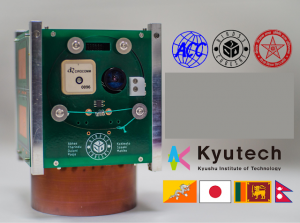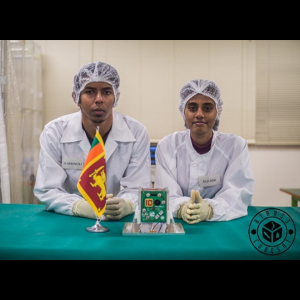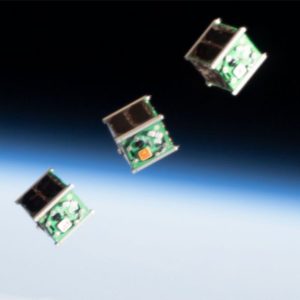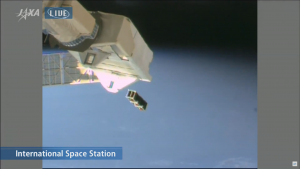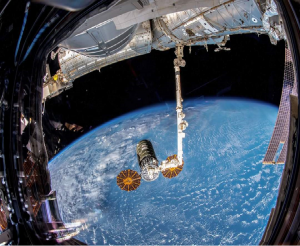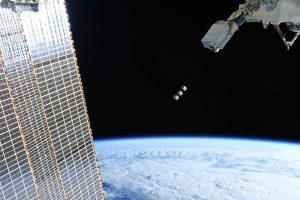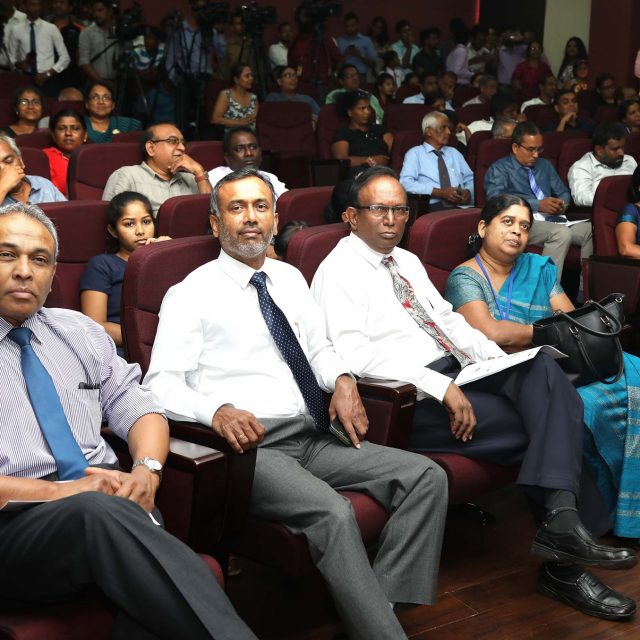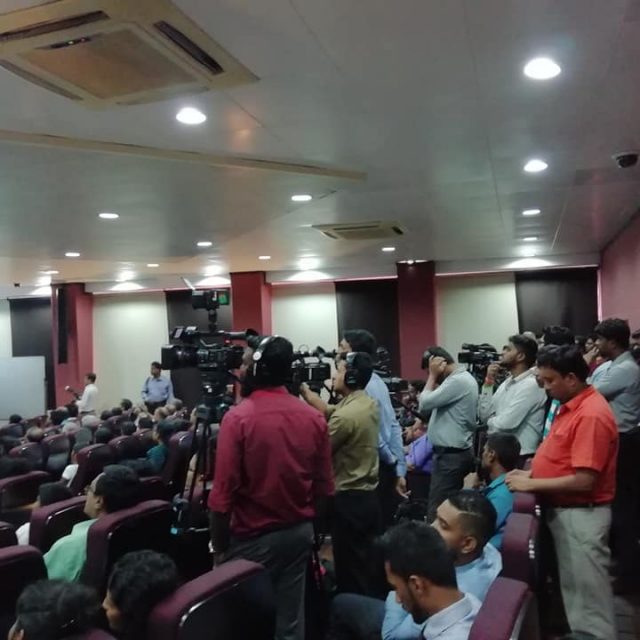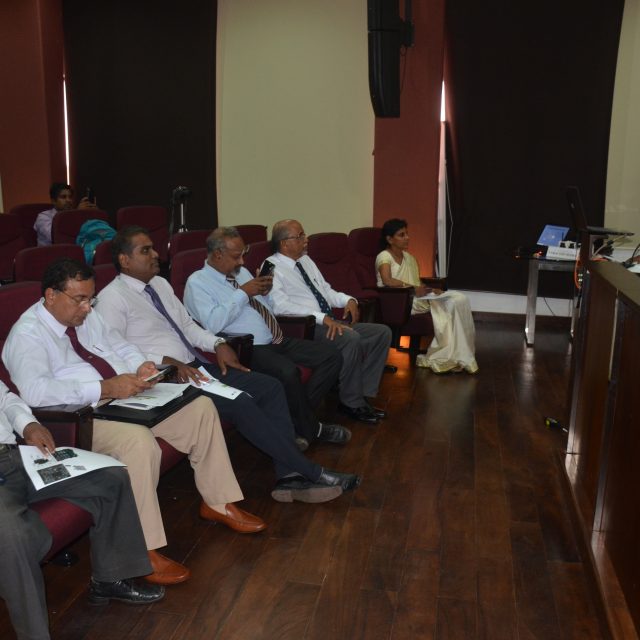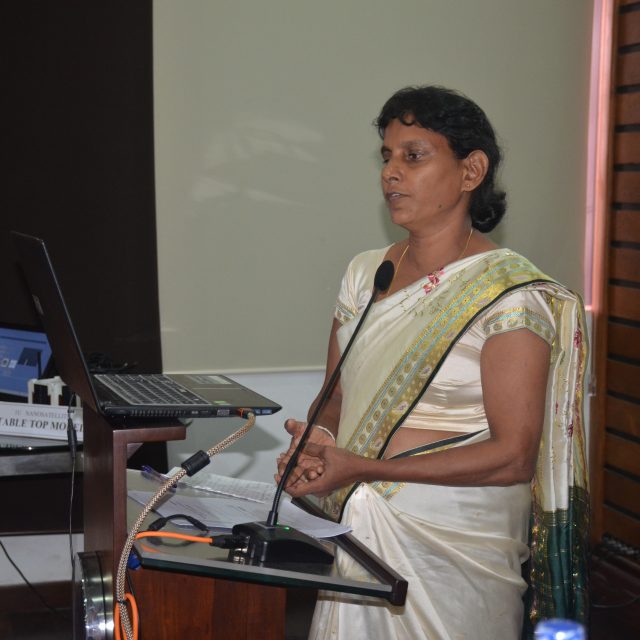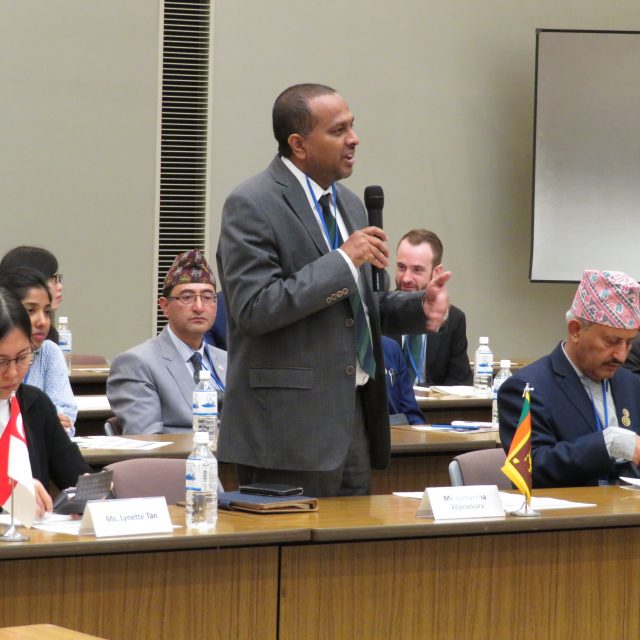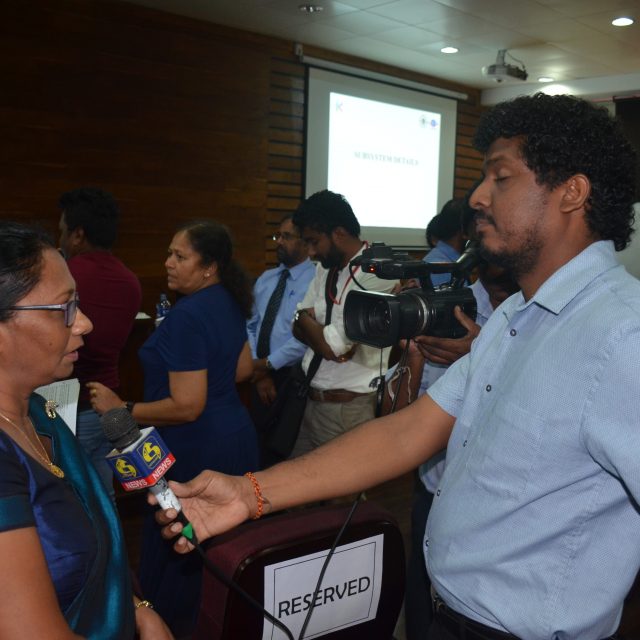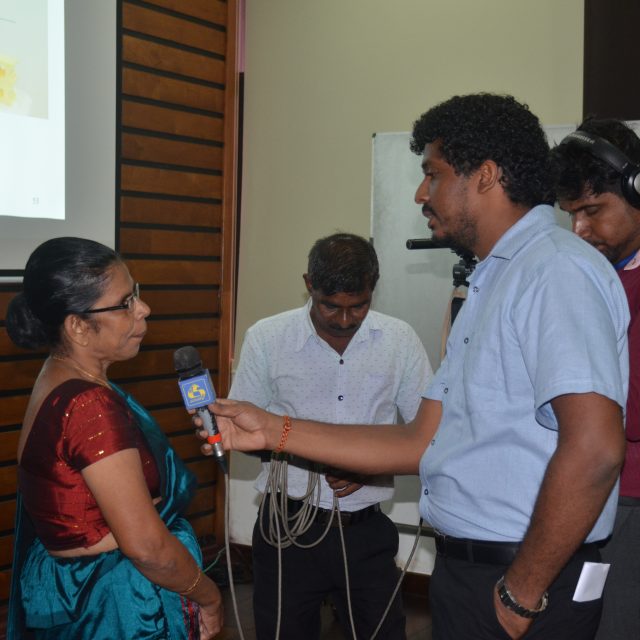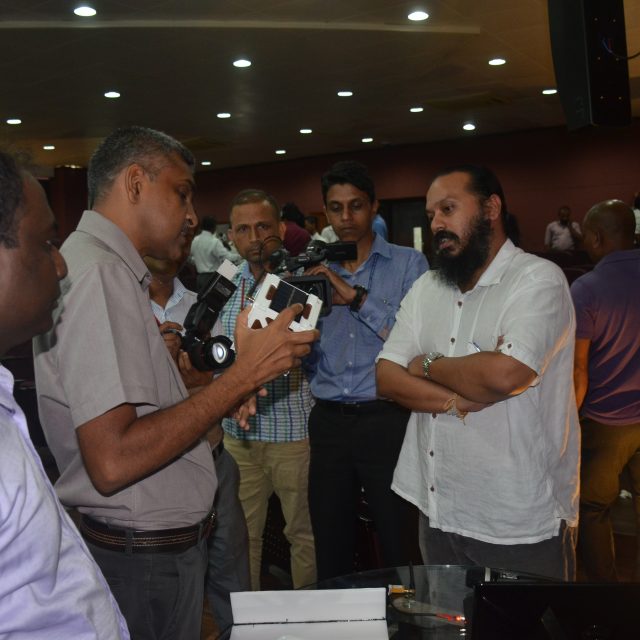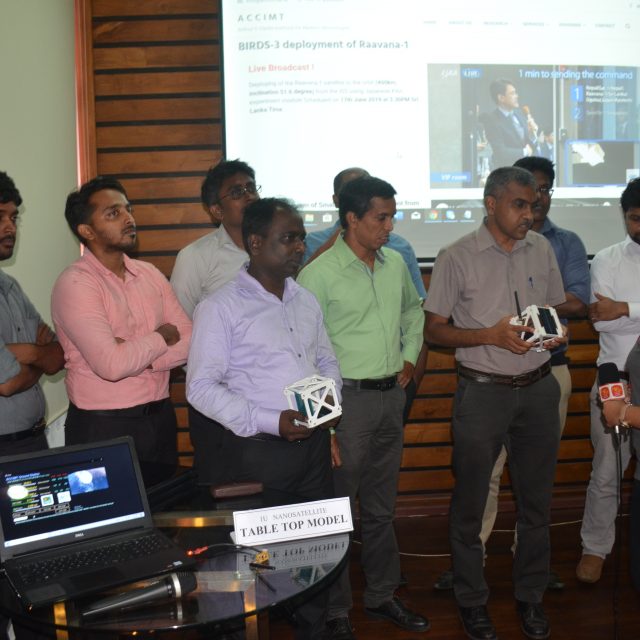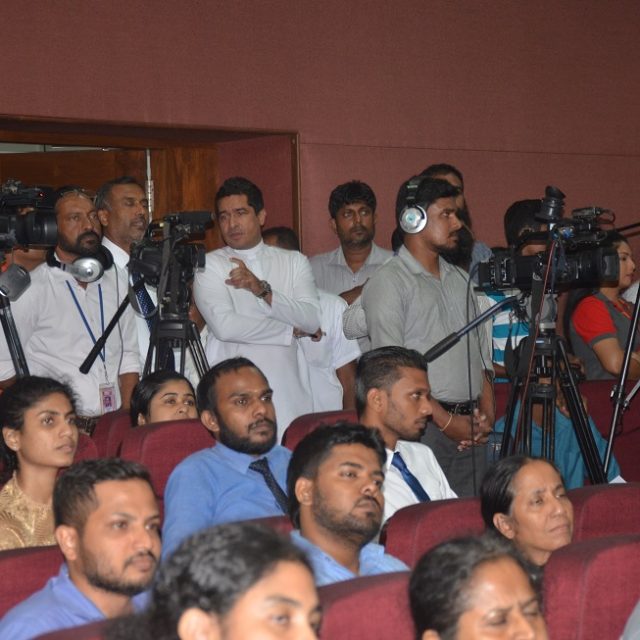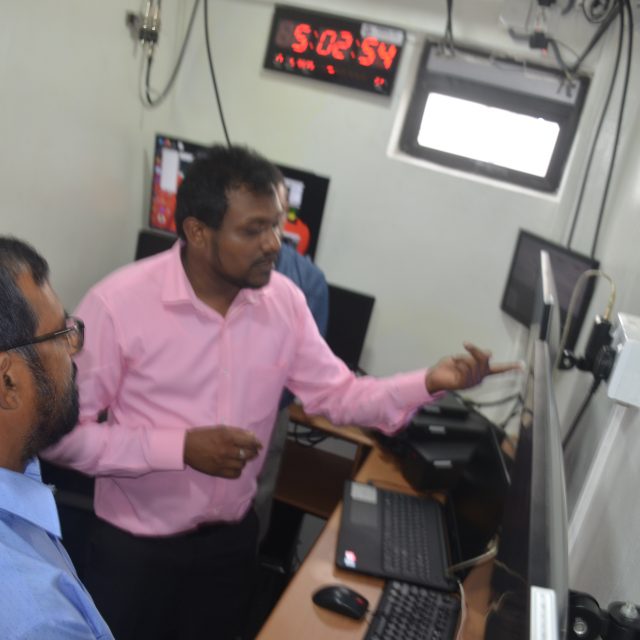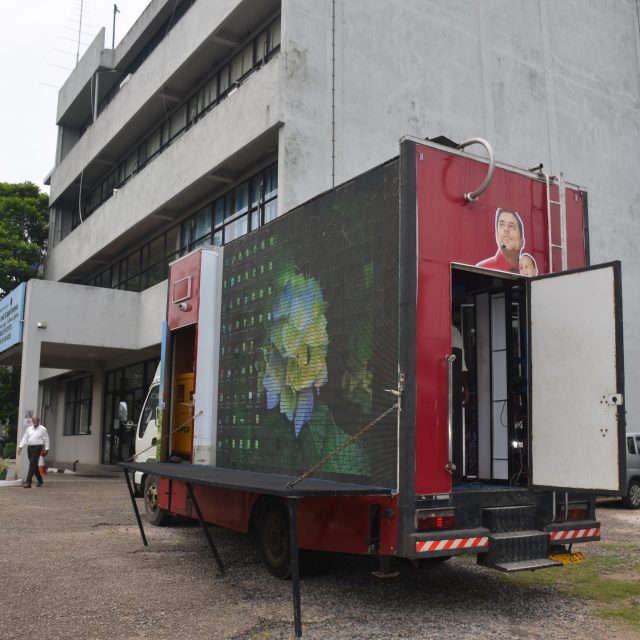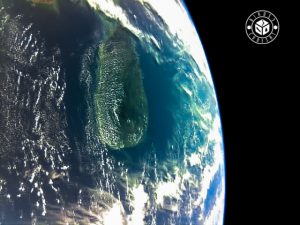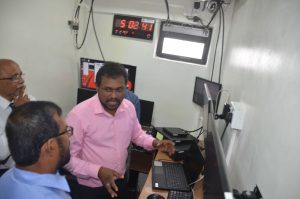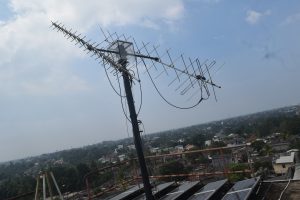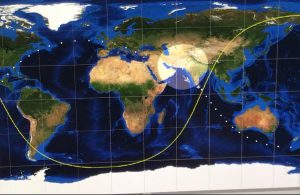'Raavana 01' 1U Nano-Satellite
Arthur C. Clarke Institute for Modern Technologies (ACCIMT), Moratuwa is the only institute in Sri Lanka working in the unique field of Space Technologies (or Space Engineering) in Sri Lanka, identified through policy documents in Science Technology and Research.
The development of a satellite in the Nano satellite family was justified to the National Planning Department and approved in 2016, as part of gaining National Pride (falling to the group of countries having operated a satellite in space), accommodating payloads having space research capabilities and most importantly developing the local engineers space technology related capacity through practical hands on and thereby transferring next level engineers in the country.
The ”Birds” project is conducted by the Laboratory of Spacecraft Environment Interaction Engineering, Kyushu Institute of Technology (Kyutech) Japan one of the leading National Universities in Japan. Main aim of “Birds” is satellite technology project assistance for none space faring countries by Japan, in developing the countries first satellite while developing the participating engineers’ postgraduate education in the field.
Sri Lanka (Arthur C. Clarke Institute for Modern Technologies) joined in the third of such program (Birds 3) by participating two of the research engineers from the Institute (Mr. Tharindu Dayaratne and Ms. Dulani Chamika) to Kyutech during 2017 after signing the Corporate Research Agreement (ACCIMT board of governors has approved the it under board reference) for a value of JPY 15 Million which covers costs for the mission plan, preliminary design review, critical design review with engineering model hardware, satellite flight model, testing facility, launching service and deploying etc. from the International Space Station using the Japanese (JAXA) Kibo experiment module.
After going to Kyutech Japan our two engineers joined with other engineers from Nepal and Japan worked as a team developing three cube satellites for the three nations (also the first satellite of Nepal) while upgrading their know through practice utilizing the space technology facilities there.
The sequence or the schedule leading to launching of a satellite is as follows.
Participating country preparations-May 2017
Mission Definition Review (MDR)-Dec 2017
Preliminary Design Review (PDR)-April 2018
Critical Design Review (CDR)-September 2018
Complete the Flight Model of the satellite (FM)-January 2019
Handing over to the Launch service provider-February 2019
Operation of the satellite from the ground station at ACCIMT-July 2019
Raavana-1, the first satellite (a Nano satellite) developed by Sri Lankan engineers through a joint multinational (Sri Lanka, Nepal and Japan) project (Birds-3) which was carried to the International Space Station (ISS) on 19th April 2019 through the Cygnus space craft, was successfully deployed to the 400km orbit (the orbit at the inclination of 51.6 degree to equatorial plane where the ISS is orbiting) on 17th June 2019 at 15.45 Sri Lanka time together with the other two.
Live video streaming of the event from ISS was organized at the ACCIMT. Hon. Minister Sujeewa Senasinghe, Minister for Science Technology and research, Ministry officials, special guests and general public attended the event.
The 1st ever cube satellite of Sri Lanka completed and deployed by Arthur C. Clarke Institute for Modern Technologies in agreement with Kyushu Institute of Technologies Japan is successful after receiving data from all the sub system status and all payload systems data including the camera images to the ground station at ACCIMT for the past 6 weeks since it’s operation from 17th June 2019.
Main data downloads from the satellite includes following,
- Research data on satellite orientation in the orbit using Gyroscope
- Research data on orbital (400km) magnetics using the Magnetometer
- Data on camera images (low resolution and high resolution) using ground command controls instantaneous or timer (images from anywhere in the Globe depending on the orbit time).
The satellite data downloading and command control currently operated from ACCIMT ground station and Japan (Kyutech) ground station using their automated facilities.
Research data will be published through the ACCIMT website for anyone interested in using them free of charge. Also anyone interested in getting the experience of satellite data downloading and commanding (when satellite is passing our region) can make a visit to ACCIMT after getting permission from Director General and contacting the ground station manager.
The missions of the Raavana-1 are as follows
- Camera for the media and social outreach activities
- Attitude Determination and Control System for Active Stabilisation of the satellite in the orbit
- LoRa demonstration validate module (for future Nano satellite long range communication methods, this has to be tested)
- Most Nano satellites use a hardware back plane for the satellite sub system interconnections which is having no flexibility. The proposed software backplane based on Complex Programmable Logic Devices is having full flexibility.
- Study of the orbit magnetics (orbit of the ISS, 400km with inclination 51.6 degrees) using a magnetometer for verification purposes with what exists.
The first CW (Continuous Wave) beacon identifications of all three satellites were received by the ACCIMT ground station during a pass through Sri Lanka at about 17.55 on the same day. Thereafter several ground stations (in the ‘Birds’ network) are receiving signals form the satellite and commands from Japan are acknowledged by the Raavana-1. Once the satellite is allowed to be commanding from Sri Lanka, it is expected to receive data from the payloads which are to be used for research purposes and system designs tested for space heritage for the next satellite development project.
VHF/UHF Groundstation

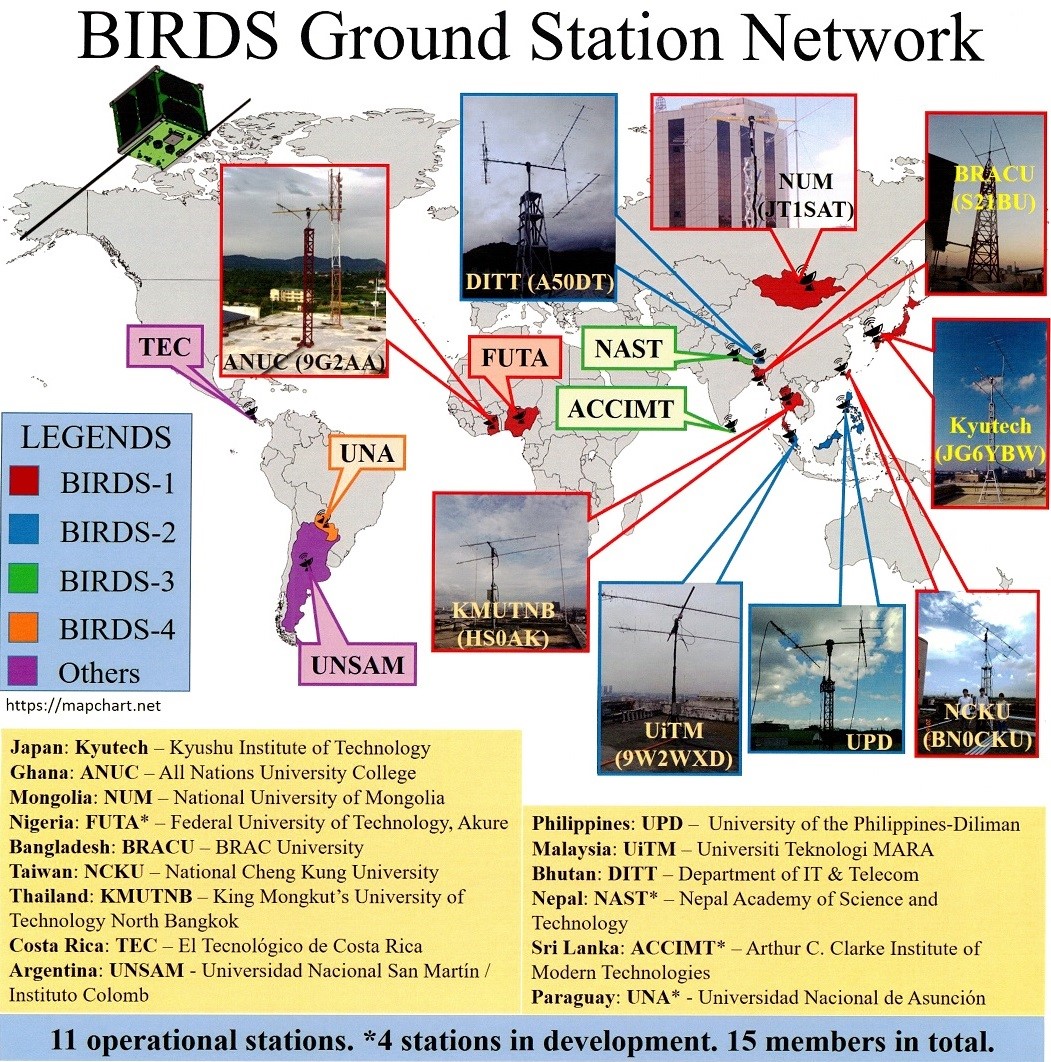
SAARC Ground Station



